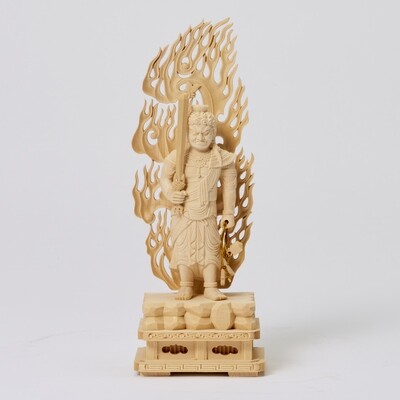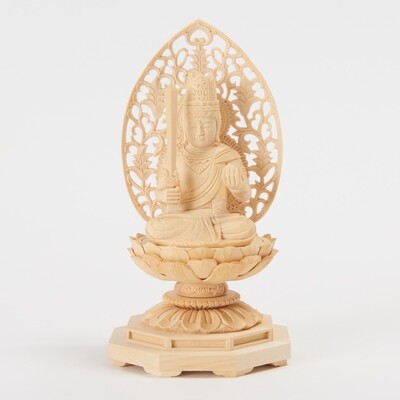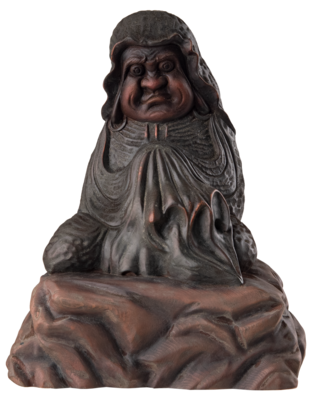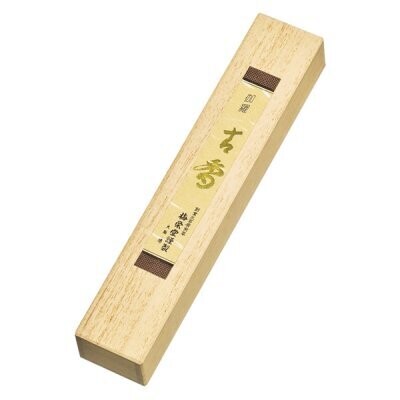Bisyamon-ten (彩色毘沙門天)
In Japan, Bishamonten is thought of as an armor-clad god of war or warriors. Bishamon is portrayed holding a spear in one hand and a small pagoda in the other hand, the latter symbolizing the divine treasure house, whose contents he both guards and gives away. In Japanese folklore, he is one of the Seven Lucky Gods.
彩色毘沙門天, originally derived from one of the gods known as Bishamonten (Vaiśravaṇa) worshiped in Indian Buddhism, is a significant figure in esoteric Buddhism, especially within the practices of the Shingon and Tendai sects. Here is a detailed explanation of 彩色毘沙門天:
彩色毘沙門天, as the name suggests, is characterized by its vivid and colorful depictions. She is typically portrayed with bright red skin and often features three eyes, giving her a fearsome appearance with sharp teeth and a protruding tongue. These characteristics symbolize her ability to overcome worldly desires and shatter illusions.
彩色毘沙門天 is often depicted holding a sword (or spear) in her right hand and a cup in her left hand. The sword represents the power to cut through desires and impurities, while the cup symbolizes the ambrosia of wisdom. Additionally, she is frequently depicted within flames, signifying the flames of wisdom.
彩色毘沙門天 holds a special place in the practices of Vajrayana Buddhism, being the focus of various secret rituals and mantras performed by its practitioners. She is also known as Vajrayogini and is particularly revered by female practitioners.
In summary, 彩色毘沙門天 is an essential female bodhisattva in esoteric Buddhism, known for her symbolism of wisdom, courage, compassion, and protection. She assists practitioners in overcoming worldly desires and enhancing their wisdom, making her an indispensable figure in the practice of esoteric Buddhism.
- Size: H11×W5.8×D4 (cm), 40g
- Material: Tsuge (柘植)
- Made in China
- You can choose the option to consecrate this statue (give an eye-opening ceremony) before it is shipped from Japan. If you choose this option, we will bring the statue to a Japanese temple, and pay them the necessary fees so that your statue is properly consecrated. The temple will issue a certificate of proof with your name on it, which will also be shipped together with your statue
- Shipped globally from Japan by using DHL. DHL is the world-class shipping services provider who makes international delivery a fast, smooth, and hassle-free experience. Delivery time can be faster than when shopping at an e-commerce website in your country, and of course your package will be covered by insurance. You can check the shipping cost for your entire order before you make a purchase







